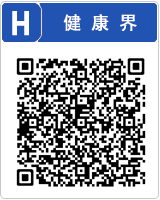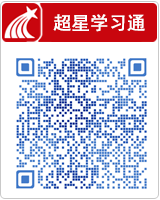中国全科医学 ›› 2024, Vol. 27 ›› Issue (35): 4446-4454.DOI: 10.12114/j.issn.1007-9572.2023.0355
所属专题: 呼吸疾病文章合辑
收稿日期:2023-06-11
修回日期:2023-08-11
出版日期:2024-12-15
发布日期:2024-09-13
通讯作者:
陈亚红
作者贡献:
潘子涵检索文献并起草了本文;李姝润进行文献检索;陈亚红选定文章主题,对文章进行了修改,并对文章负责。
基金资助:
PAN Zihan1,2, LI Shurun1, CHEN Yahong1,*( )
)
Received:2023-06-11
Revised:2023-08-11
Published:2024-12-15
Online:2024-09-13
Contact:
CHEN Yahong
摘要: 近年来,物联网技术得到了极为快速的发展,在医学领域也广为应用。慢性阻塞性肺疾病(简称慢阻肺病)是我国最为常见的慢性呼吸疾病,如何利用物联网技术改善慢阻肺病管理的临床实践值得探讨。笔者对国内外物联网技术在慢阻肺病管理中的研究进展进行总结,通过回顾文献发现,目前物联网在慢阻肺病管理中的应用研究仍处于探索阶段,缺乏高质量、大样本研究,后期研究中需对技术成熟的模式或产品进行更为系统基于真实世界的应用评价,特别是对患者远期临床结局、生活质量的影响,以及卫生经济学评价。产品设计应当符合慢阻肺病特征及使用人群特点,通过定性研究了解用户使用体验、看法或态度也值得关注。
中图分类号:
| [1] |
杨达伟,张静,白春学. 物联网医学的研究现状和展望[J]. 国际呼吸杂志,2012,32(18):1438-1441. DOI:10.3760/cma.j.issn.1673-436X.2012.018.018.
|
| [2] | |
| [3] |
李彦儒,曾咏梅,程丽,等. 物联网在慢性疾病中应用现状的可视化分析[J]. 循证护理,2021,7(2):235-240. DOI:10.12102/j.issn.2095-8668.2021.02.019.
|
| [4] |
|
| [5] |
|
| [6] |
|
| [7] |
|
| [8] |
World Health Statistics 2017-Monitoring health for the SDGs[EB/OL].[2021-05-10].
|
| [9] |
|
| [10] |
|
| [11] |
陈小平,李星,何斐,等. 基于物联网医疗下慢性阻塞性肺疾病规范化管理模式的SWOT分析[J]. 中国卫生标准管理,2022,13(13):120-124. DOI:10.3969/j.issn.1674-9316.2022.13.029.
|
| [12] |
|
| [13] |
李凡,高臻,盛春风,等. 移动互联网信息平台在慢性阻塞性肺疾病分级诊疗中的应用效果研究[J]. 中国全科医学,2018,21(30):3730-3734. DOI:10.12114/j.issn.1007-9572.2018.00.030.
|
| [14] |
|
| [15] |
|
| [16] |
|
| [17] |
刘怡彤,马利军. 基于"互联网+"的移动医疗技术在慢性阻塞性肺病稳定期管理的应用及问题研究[J]. 医学信息,2019,32(6):38-40. DOI:10.3969/j.issn.1006-1959.2019.06.014.
|
| [18] |
崔晶晶,刘元元,郝敬媛,等. 基于物联网的呼吸慢病管理[J]. 中国老年保健医学,2021,19(2):149-151. DOI:10.3969/j.issn.1672-2671.2021.02.049.
|
| [19] |
|
| [20] |
|
| [21] |
周磊,姜燕,杜春玲,等. 物联网便携式肺功能检测仪的研制与临床应用[J]. 国际呼吸杂志,2019,39(2):113-118. DOI:10.3760/cma.j.issn.1673-436X.2019.02.007.
|
| [22] |
王广东,马爱平,陈玲玲,等. 物联网便携式肺功能仪用于厦门市居民肺功能筛查的效果分析[J]. 临床肺科杂志,2022,27(11):1653-1658. DOI:10.3969/j.issn.1009-6663.2022.11.005.
|
| [23] |
|
| [24] |
|
| [25] |
高连军,赵红梅. 2017年全国各级医疗机构医生对肺康复的认知及实施状况的调查[J]. 中华结核和呼吸杂志,2019,42(4):275-278. DOI:10.3760/cma.j.issn.1001-0939.2019.04.006.
|
| [26] |
|
| [27] |
|
| [28] |
杨露露,杨汀. 移动智能设备在慢性阻塞性肺疾病患者呼吸康复中的研究进展[J]. 中华物理医学与康复杂志,2021,43(8):748-751. DOI:10.3760/cma.j.issn.0254-1424.2021.08.019.
|
| [29] |
冯鹏,董卫彦,谢婷,等. 物联网在COPD患者呼吸康复护理中的应用[J]. 中华现代护理杂志,2021,27(12):1625-1629. DOI:10.3760/cma.j.cn115682-20200906-05230.
|
| [30] |
张鑫,李文雅. 基于物联网云平台的肺康复护理对慢性阻塞性肺疾病稳定期老年患者的干预效果[J]. 中国医药科学,2022,12(15):127-130. DOI:10.3969/j.issn.2095-0616.2022.15.032.
|
| [31] |
|
| [32] |
|
| [33] |
|
| [34] |
|
| [35] |
|
| [36] |
|
| [37] |
|
| [38] |
|
| [39] |
|
| [40] | |
| [41] |
|
| [42] |
高辉,高院,孙萍,等. 网络远程管理联合无创通气治疗慢性阻塞性肺疾病合并呼吸衰竭的临床研究[J]. 临床肺科杂志,2020,25(3):347-351. DOI:10.3969/j.issn.1009-6663.2020.03.006.
|
| [43] |
李文龙,张华,张鹏. 物联网云平台管理下慢性阻塞性肺疾病合并慢性呼吸衰竭患者家庭无创通气效果及依从性研究[J]. 临床内科杂志,2017,34(4):275-276. DOI:10.3969/j.issn.1001-9057.2017.04.019.
|
| [44] |
|
| [45] |
|
| [46] |
|
| [47] |
|
| [48] |
|
| [49] |
|
| [50] |
白春学. 改变社区和专科医师服务模式的技术平台——物联网医学的深层次作用[J]. 国际呼吸杂志,2014,34(12):881-882. DOI:10.3760/cma.j.issn.1673-436X.2014.12.001.
|
| [51] |
王伟刚,魏新萍,马学东,等. 基于物联网的古美社区慢性阻塞性肺疾病患者管理模式的建立[J]. 复旦学报(医学版),2017,44(3):344-347. DOI:10.3969/j.issn.1672-8467.2017.03.015.
|
| [52] |
陈小平,翁朝航,池海燕,等. 物联网医学技术在肺功能筛查中的应用研究[J]. 中国卫生信息管理杂志,2020,17(4):528-532,543. DOI:10.3969/j.issn.1672-5166.2020.04.025.
|
| [53] |
吕梦轩,祁祯楠,迟春花. 基于可穿戴设备的智慧医疗对慢性阻塞性肺疾病管理的影响[J]. 中华全科医师杂志,2022,21(3):213-218. DOI:10.3760/cma.j.cn114798-20210918-00711.
|
| [54] |
蒋维芃,金鑫,陈翠翠,等. 可穿戴设备在呼吸系统疾病中的应用现状与展望[J]. 中国临床医学,2021,28(6):919-924. DOI:10.12025/j.issn.1008-6358.2021.20210361.
|
| [55] |
赵虹,高小丽,郭贝贝,等. 物联网联合多学科诊疗康复护理模式对慢性阻塞性肺疾病康复效果的影响[J]. 结核与肺部疾病杂志,2022,3(3):187-192. DOI:10.19983/j.issn.2096-8493.20220046.
|
| [56] |
|
| [57] |
|
| [58] |
|
| [59] |
唐玲,郭爱敏,俞杰,等. 社区老年慢性阻塞性肺疾病患者对基于移动医疗的健康教育需求的质性研究[J]. 中国护理管理,2022,22(4):537-542. DOI:10.3969/j.issn.1672-1756.2022.04.012.
|
| [60] |
|
| [61] |
|
| [62] |
|
| [63] |
|
| [1] | 王婷婷, 唐勇, 张文轲, 李志刚. 高尿酸血症运动干预的研究进展[J]. 中国全科医学, 2025, 28(30): 3841-3846. |
| [2] | 徐百川, 王艳, 张彭, 李艺婷, 刘飞来, 谢洋. 慢性阻塞性肺疾病共病肺癌筛查工具分析[J]. 中国全科医学, 2025, 28(30): 3847-3852. |
| [3] | 周晟, 邓长生, 邹冠炀, 宋健平. 疟疾心血管疾病并发症发病机制的研究进展[J]. 中国全科医学, 2025, 28(27): 3466-3472. |
| [4] | 黄雨琳, 王浩云, 李燕梅, 萧雪英. 胃癌患者化疗期间症状群的范围综述[J]. 中国全科医学, 2025, 28(26): 3338-3344. |
| [5] | 刘银银, 隋鸿平, 李婷婷, 姜桐桐, 史铁英, 夏云龙. 乳腺癌治疗相关心脏毒性风险预测模型的研究进展[J]. 中国全科医学, 2025, 28(24): 3072-3078. |
| [6] | 李苗秀, 朱博文, 孔令军, 房敏. 青少年脊柱侧弯保守治疗临床评估工具研究进展[J]. 中国全科医学, 2025, 28(24): 3079-3088. |
| [7] | 肖瑶, 万钧. 直接口服抗凝药在静脉血栓栓塞特殊人群中的临床应用[J]. 中国全科医学, 2025, 28(24): 3066-3071. |
| [8] | 阮万百, 李俊峰, 尹艳梅, 彭磊, 朱克祥. 胰腺癌靶向治疗及免疫治疗的研究新进展[J]. 中国全科医学, 2025, 28(23): 2950-2960. |
| [9] | 周连鹏, 李伟峰, 董新刚, 王晓元. 铜稳态调节机制在认知障碍中的作用探析[J]. 中国全科医学, 2025, 28(23): 2941-2949. |
| [10] | 董浩铖, 郝潇, 安东, 李浩翰, 李树仁. 射血分数超常的心力衰竭的研究进展[J]. 中国全科医学, 2025, 28(21): 2692-2696. |
| [11] | 杜琼靓, 林白浪, 郭洪花. 群组育儿保健模式的研究进展及启示[J]. 中国全科医学, 2025, 28(21): 2672-2678. |
| [12] | 郭翔云, 章轶立, 李婷, 冯天笑, 李玲慧, 孙凯, 王旭, 秦晓宽, 田金洲, 朱立国, 魏戌. 骨健康重点病种流行趋势及影响因素分析[J]. 中国全科医学, 2025, 28(19): 2346-2353. |
| [13] | 朱立国. 夯实基层骨健康服务根基 助力推进健康中国计划[J]. 中国全科医学, 2025, 28(19): 2345-2345. |
| [14] | 褚田雨, 顾艳. 颈动脉钙化特征在评估斑块稳定性及临床事件中的作用[J]. 中国全科医学, 2025, 28(18): 2247-2252. |
| [15] | 朱子一, 何贵新, 秦伟彬, 宋惠, 张利文, 唐伟智, 杨斐斐, 刘凌云, 欧阳彬. 线粒体自噬改善心肌梗死后心肌纤维化及其中医药干预的研究进展[J]. 中国全科医学, 2025, 28(18): 2294-2300. |
| 阅读次数 | ||||||
|
全文 |
|
|||||
|
摘要 |
|
|||||





